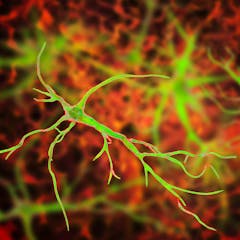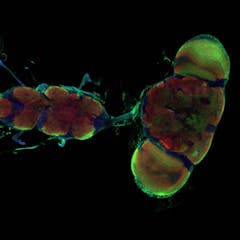
Articles on Neuroscience
Displaying 161 - 180 of 689 articles

New research points to a biological way that racism can lead to health disparities.

The COVID-19 pandemic and a growing global refugee crisis have shone a light on the ever-increasing need for new approaches to mental health treatment.

Mouse brains produce random, strong bursts of dopamine and are able to control them. This may challenge many long-held ideas about learning and motivation.

From the archive: new research helps unpick clues about the brain’s ability to change its structure. Listen to The Conversation Weekly podcast.

Ready to party post-pandemic, but at the same time feeling shy? Here’s how social isolation affects the brain – and what research suggests about the effects of resocialization.

Fetal brains are changing rapidly over the course of pregnancy, but so are the brains of mothers-to-be. Neuroscience research shows one way worry can start taking hold – and a simple way to help.

To tell you the truth, nobody really knows. But it’s probably got to do with the fact that signals from your nose and your eyes arrive in the same area of your brain.

A transcript of episode 13 of The Conversation Weekly podcast, including new research on neuroplasticity in the brain.

Early reports suggested an apparent increase in OCD relapse rates and symptom severity during the pandemic. But a year on, we’re learning this may not be the case.

Scientists still still don’t fully understand how general anaesthesia affects the brain and body. A molecule found in bioluminescent stony coral may shed some light.

Rather than distinctly male or female, the human brain is much more like the heart, kidneys and lungs – basically the same no matter the sex of the body it’s in.

Adaptable neurons are tied to learning and memory but also to neurological disorders. By studying fruit flies, researchers found a mechanism that controls neuroplasticity.

In American Sign Language, some words rhyme, some look like what they mean and some are used more often than others. A new database of these features paves a pathway for ASL research.

As the UK’s first clinic to offer psychedelic drugs for mental health disorders opens, a study reveals that informed users don’t have problems with self control.

Blame your ears, your eyes and your brain. But mainly your ears!

Cognitive neuroscientists use brain imaging and behavioral economic games to investigate people’s sense of fairness. They find it’s common to take care of yourself before looking out for others.

Neanderthal-human hybrid brains grown in the lab give fascinating insights into evolution.

Children aren’t just losing out on education as a result of the pandemic.

New research demonstrates that it is more difficult to learn something new if the information had been rewarded in the past. In fact, the higher the reward, the worse the future learning.

Neuroscientists tackling the age-old question of whether perceptions of color hold from one person to the next are coming up with some interesting answers.
